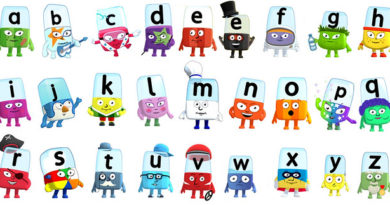Teaching Phonics in the Classroom. #frogonalog
Teaching Phonics in the Classroom. @oposiciones_ingles #frogonalog #phonetics #phonics #instateachers #oposicion #oposito #tales #learnenglish #storytime #knowledge #stories #tales #readingtime
Source: https://www.youtube.com/watch?v=Q22HH2DpAPI
TOPIC 9.
Description of the English phonological system. Learning models and techniques. Perception, discrimination and production of sounds, stress, rhythm and intonation. Phonetic correction.
1. Introduction
• English as an international language or “World Englishes”.
• Phonological competence, as part of the students´ communicative competence.
• learning strategies and techniques, considering that the main objective in Primary Education is not to achieve a native-like accent, but to develop in our students the abilities to understand different accents and to produce English above the “threshold level”.
2. English phonological system. Learning models and techniques
• Phonological competence: knowledge of, and skill in the perception and production of sounds and prosodic features such as stress, rhythm and intonation.
• Goal of teaching pronunciation: threshold level of pronunciation.
• Segmental elements. Vowels:
• Long-short.
• Front vs. back vowels.
• High, mid, and low vowels.
• Lip rounding.
• Wide and narrow.
• Diphthongs. (8) 3 different glides: /i/ (/ei/ mate; /ai/ might; /oi/ boy); /ə/ (/eə/ mare, /iə/ here, /uə/ sure); /u/. (/əu/ boat; /au/ cloud).
• Consonants: (24). Classification: 1. Voicing: (voiced, voiceless); Place of articulation: (bilabial, labiodental, dental, alveolar palatal, velar, glottal); Manner of articulation: (plosive, fricative, affricate, nasal, lateral).
• Prosodic features (suprasegmental elements): Stress (rhythmic beat of a syllable); Rhythm. (Stress at syntax level); Intonation (Rise and fall of pitch of voice in speech).
• Communicative framework for teaching pronunciation: drama, songs and games.
3. Perception, discrimination and sounds emission, intonations, rhythms and accents. Phonetic correction
• If we want our FL students to become effective communicators in English, we should ensure that students are provided with variety in accents, hence the importance of presenting different models. Information and communication technologies (ICT) has brought about a massive amount of possibilities for FL teachers to gather authentic models.
• The learners´ perception is an indispensable factor to be considered in order to improve their performances. Getting learners to perceive sounds starts with imitation strategies after students have been presented with appropriate varied models.
• Phonetic correction: the teacher´s correction is crucial in primary education because children have not fully developed their phonological competence. However, it is indispensable to consider what to correct (i.e. not to provoke a breakdown in communication); how to correct (not to stigmatize students); when to correct (depending on the class situation). Self-correction, peers feedback.
4. Conclusion
Teachers cannot forget that the main goal is not to achieve a native-like pronunciation, but to be able to understand different “Englishes” and produce above what is considered as understandable.
1. INTRODUCTION
The crucial role of English as a lingua franca (communication in English between speakers from different first languages) all over the world is widely acknowledged. This concept is to be understood as part of a more general phenomenon: English as an international language or “world Englishes”. As a consequence of this international use, English has been shaped by both native and non-native speakers. Paradoxically, the majority of verbal exchanges in English do not involve native speakers. On the other hand, native accents, i.e. Received Pronunciation (RP) or General American (GA) tend to be regarded as custodians of appropriate English use. In other words, there is not just one English but many. Therefore, there is a great dialectal and accentual variation which leads FL teachers to some questions: which variety to focus on? And, does a particular accent contribute in a more efficient way to our learners´ communicative competence?
An updated perspective on this topic requires analyzing the concept of phonological competence, as part of the students´ communicative competence and the complexity of the English phonological system. Similarly, we shall deal with learning strategies and techniques, considering that the main objective in Primary Education is not to achieve a native-like accent, but to develop in our students the abilities to understand different accents and to produce English above the “threshold level” of what can be understood.
However, what do we understand by phonological competence?
2. THE ENGLISH PHONOLOGICAL SYSTEM. MODELS AND LEARNING TECHNIQUES
Prior to the analysis of the English phonological system, we should introduce the concept of phonological competence as an important component of the linguistic competence described in the Common European Framework of Reference for Languages (CEFRL, 2001). Broadly speaking, phonological competence refers to the knowledge of, and skill in the perception and production of sounds and prosodic features such as stress, rhythm and intonation.
In more practical terms and taking these concepts to the primary FL classroom, our students should be able to understand basic phonological aspects and produce above the level of what we consider understandable. According to Celce-Murcia and Goodwin (1996), there is a threshold level of pronunciation in English such that if a given non-native speaker’s pronunciation falls below this level, he or she will not be able to communicate orally, no matter how good his or her control of English grammar and vocabulary might be. Thus, the goal of teaching pronunciation to our students is not to make them sound like native speakers of English.
Let us now move on to an analysis of the English phonological system.
Vowels: Vowels can be defined as the most prominent sounds in a syllable; therefore, they occur at the centre of syllables. Vowel sounds are usually produced without any kind of contact between the articulators.
In English, there are twelve Vowels and two Semivowels which can be classified in two groups depending on their length:
• Short Vowels /æ/, /٨/, /e/, /∂/, /I/, / ס/, /υ/
• Long Vowels /a:/, /3:/, / I:/, / ס:/, /υ:/
In relation to the way they can be described according to the point of view of articulatory phonetics, vowels are classified according to the position of the movable organs, the tongue and lips. Thus, the following vowel classification is established:
High, mid, and low vowels.
A high vowel (such as “i” in “machine” and “u” in “rule”) is pronounced with the tongue arched towards the roof of the mouth. A low vowel (such as “a” in “father”) is produced with the tongue relatively flat and low in the mouth and with the mouth open a little wider than for high vowels. Mid vowels (such as “e” in “bed” and “o” in “pole”) have a tongue position between the extremes of high and low.
Front vs. back vowels.
A front vowel is pronounced with the highest part of the tongue pushed forward in the mouth and somewhat arched. The “a” in “had”, the “e” in “bed”, and the “i” in “fit” are front vowels. A back vowel like the “u” in “rule” and the “o” in “pole” is produced with the back part of the tongue raised towards the soft palate (velum).
Lip-rounding (labialization).
The shape and position of the lips leads to a third articulatory dimension by which vowels are classified. The lips may be rounded or spread, in what is called labialisation.
Wide and narrow vowels.
Wide and narrow refer to the tongue-root position. In narrow vowels, the tongue root is retracted towards the pharyngeal wall, and the pharynx is narrowed.
Diphthongs are sounds which consist of a movement or glide from one vowel to another. According to the three different glides in English diphthongs, the following classification is established:
Glide to / I /: /eI / as in ‘mate’; /aI / as in ‘might’; /oI / as in ‘boy’
Glide to /∂/: /e∂/ as in ‘mare’; /I ∂/ as in ‘here’; /υ∂/ as in ‘sure’
Glide to /υ/: /∂υ/ as in ‘boat’; /aυ/ as in ‘cloud’
Finally, tripthongs are the combination of three vowel sounds serving as a monophthong. In fact, it consists of a diphthong plus ‘schwa’. These can appear within a word as in the case of “fire” /fa I ∂/, and also as a suffix morpheme “-er” as in “lower” /l∂υ∂/.
Consonants: English has 24 consonant sounds that can be described in terms of their place of articulation and manner of articulation and in terms of voicing. As opposed to vowels, in consonants the airstream finds certain degree of friction in the articulators.
Voicing: Voicing refers to the production of sounds where the vocal cords are vibrating (voiced sounds) or where these do not vibrate (voiceless sounds).
Place of articulation: It refers to where the sound is produced. According to this, English consonants can be:
• Bilabial: The two lips (i.e. /b/).
• Labiodental: Lower lip, upper teeth (i.e. /v/).
• Dental: Inner edges of the teeth (i.e. /Ɵ/).
• Alveolar: Tongue on tooth ridge (i.e. /d/).
• Palatal: Tongue on hard palate (i.e. /j/).
• Velar: Tongue on soft palate (i.e. /k/).
• Glottal: Throat passage (i.e. /h/).
Manner of articulation: It refers to the obstruction that the vocal organs make to the airstream as it is released. In this sense, consonants can be classified into:
• Stop or Plosive: The airstream gets blocked completely, (i.e. /p/ as in “pot”)
• Fricative: If the air stream is compressed and passes through a small opening, (i.e. /f/ as in “full”, /z/ as in “zoo”).
• Affricate: The sound begins like a Stop and then is released like a Fricative, (i.e. /t∫/ as in “church”, /d3/ as in “George”).
• Nasal: If the air passes through the nose (i.e. /m/ as in “mum”, /n/ as in “nose”).
• Lateral: If the air stream moves around the tongue (i.e. /l/ as in “long”)
• Semivowel or Approximant: The sound is very close to being a vowel, (i.e. /w/ and /y/).
Up to now, we have seen what in phonetic terms is known as segmental level (vowels and consonants). Nevertheless, English has suprasegmental elements (prosodic features) which facilitate speech acts: Stress, Rhythm, and Intonation.
Stress: In a tone unit of several syllables, there is always one which is more prominent than the rest, because it is the point where the intonation changes. This syllable involves more muscular effort; it is louder, longer and presents more pitch variation than the neighbouring syllables. In this sense, stress can be defined as the way in which a syllable carries a rhythmic beat.
Rhythm: Rhythm consists of an ordered recurrent alternation of strong and weak elements in the flow of sound and silence in speech. Thus, rhythm can be said to be stress at syntax level.
Intonation can be defined as the rise and fall of pitch of the voice in speech. English is seldom monotone; rather, speakers produce melodies of different kinds through raise and falling of voice.
Intonation is also a crucial factor to convey meaning, since depending on it the same sentence may have a different meaning (i.e. surprise, anger, etc). Similarly, the same sentence can be turned from a simple assertion (i.e. “the sky is blue”) to a question (i.e. “the sky is blue?”), by adding a rising intonation (high final pitch).
There are three important end-of-sentence intonations: falling (the speech is finished), rising (it is non-final, not conclusive), and falling-rising (imply concessions or contrasts).
Now we shall deal with some Learning models and teaching techniques.
Celce-Murcia, Brinton and Goodwin (1996) suggest a communicative framework for teaching pronunciation. This approach is based on presenting a framework for the sequencing of activities within pronunciation instruction. This communicative framework includes five stages:
• Description and analysis: The teacher presents a feature (inductively or deductively) showing when and how it occurs.
• Listening discrimination: In this stage, listening activities include contextualized minimal pair discrimination (i.e. the students listen and distinguish amongst rising or falling intonation).
• Controlled practice: … More information:
https://shop.oposicionesingles.com/
www.oposicionesingles.com
blog.oposicionesingles.com
facebook.com/OposicionesInglesRP/
Twitter: https://www.facebook.com/OposicionesInglesRP
Instagram: https://www.instagram.com/oposiciones_ingles





Hace 29 años que aprobé la oposición. Me encanta bichear y ver nuevas formas de hacer. También me gusta aprender y hay mucho que ignoro así que leer vuestros artículos es un placer. Gracias
Buenos días, agradecemos tus palabras y nos dan alas para seguir adelante.
Somos dos maestros apasionados de la educación; adoramos nuestro trabajo. Road to your Post nace con vocación de permanencia con el fin de ayudar al opositor en esta carrera de fondo, presentando un material (publicaciones) que están recibiendo una gran acogida a nivel nacional. Hemos considerado que nuestro blog es también un punto de partida para el crecimiento personal de los docentes. En estos enlaces tienes más información sobre nosotros; gracias por tu tiempo y atención. Esperamos que sigas disfrutando de nuestras entradas.
Nuestra web: http://www.oposicionesingles.com
Enlaces:
https://goo.gl/nnoJEJ
http://www.el-lorquino.com/entrevista-lorquinos-maestros-de-ingles-y-escritores/
Muchas gracias,
Soy Mariano Muñoz…tengo solamente un año de servicio más que tú y sigo amando esta profesión y aprendiendo cada día, seguramente igual que tú.
Gracias de nuevo por tus palabras.
Saludos